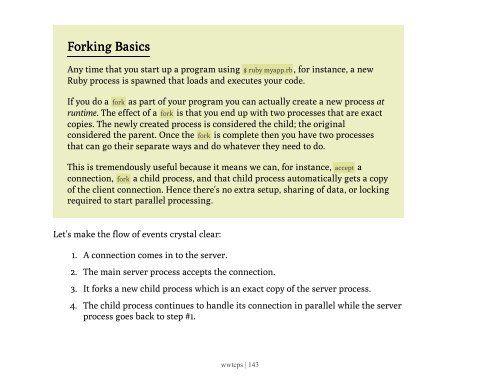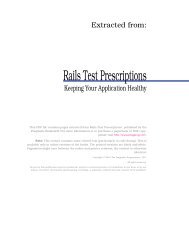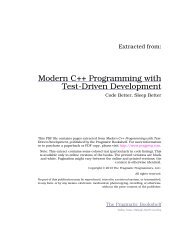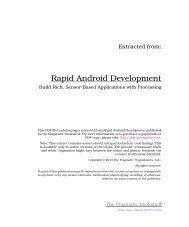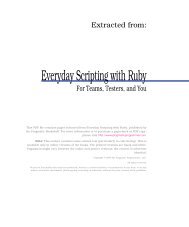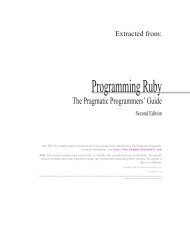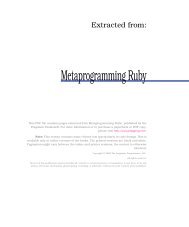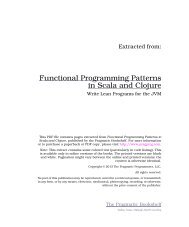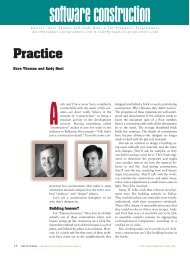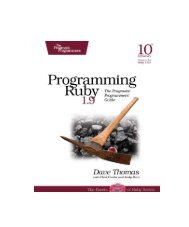Process per connection
Process per connection
Process per connection
You also want an ePaper? Increase the reach of your titles
YUMPU automatically turns print PDFs into web optimized ePapers that Google loves.
Forking BasicsAny time that you start up a program using $ ruby myapp.rb , for instance, a newRuby process is spawned that loads and executes your code.If you do a fork as part of your program you can actually create a new process atruntime. The effect of a fork is that you end up with two processes that are exactcopies. The newly created process is considered the child; the originalconsidered the parent. Once the fork is complete then you have two processesthat can go their separate ways and do whatever they need to do.This is tremendously useful because it means we can, for instance, accept a<strong>connection</strong>, fork a child process, and that child process automatically gets a copyof the client <strong>connection</strong>. Hence there's no extra setup, sharing of data, or lockingrequired to start parallel processing.Let's make the flow of events crystal clear:1. A <strong>connection</strong> comes in to the server.2. The main server process accepts the <strong>connection</strong>.3. It forks a new child process which is an exact copy of the server process.4. The child process continues to handle its <strong>connection</strong> in parallel while the serverprocess goes back to step #1.wwtcps | 143


